Visions of Yemen: Differing Perspectives of a Uniquely Beautiful Country [Archives:2000/46/Last Page]
Karen Dabrowska
The first exhibition of Yemeni art to tour Britain provides differing perspectives of a uniquely beautiful country.
The 16 Yemeni and 11 British artists prove beyond doubt that Yemen continues to live up to its name of Arabia Felix, the happy country. Apart from the abstract red, dark blue and purple figures of Mazher Nizar, subtle light colors are used to convey the serenity of a land steeped in history. Yemen is a society which has lept into the 21st century – bedouins communicate using mobile phones – but the artists are drawn to the scenery, landscape and self assured figures in traditional dress, proud of their heritage and culture.
The background and experience of the artists is as varied as the scenes they portray: Mazher Nizar was born in India and studied at the Government College of Art & Craft in Calcutta. He set up the Hadda Art Gallery in Sanaa and was a founding member of Yemens Modern Art Group. The work of Abdo Nagi, a Yemeni ceramist and potter who settled in Britain in 1967 is sought after by private collectors and is also in the public collections of the British Museum and the Caermarthen County Museum in Wales. Ilham Al Arashi, the head of the Aden Branch of the Union of Yemeni Visual Artists studied at the Surikov Academy in Moscow. Yasin Ghaleb is the Director of the Bab Al Yemen Information Centre and Art Gallery. He refuses to put a label on his work. I am not going to put myself in a box and then force myself to take the shape of that box. His unique mixed media creations come in many shades of brown. Sanaa is brown, the Yemeni skin is brown, it is the colour of the land, the mother of human beings and we have to respect it, he insists.
Among the British artists featured at the exhibition was Carolne Lees, Martin Yeoman, Anita Hill and Ken Howard.
Born in Shropshire, Caroline Lees studied at The Corcoran Gallery School of Art in Washington DC and was selected for master classes in oils at The Slade School of Art, London. There have been several one-man shows and she has exhibited widely in the USA, the Middle East and the UK, including the Royal Academy Summer Exhibitions, the Mall Galleries, RSMA, and The Mathaf Gallery, London. She has also had one book published: Caroline Lees Watercolors of Shropshire, and her work has appeared as prints, cards and illustrations and can be found in many collections, including that of the National Trust. One of the organizers of Visions of Yemen, she was commissioned to paint a watercolor for HRH Prince of Wales visit to Oman.
Martin Yeoman has exhibited at the Royal Academy and won several prestigious awards. His most recent works include illustrations for Tim Mackintosh-Smiths book Yemen: Travels in Dictionary Land.
Anita Hill, is a fellow of the Royal Geographical Society with whom she had an exhibition of paintings of Yemen in 1997 and Ken Howard was twice appointed official artist for the Imperial War Museum in Northern Ireland. He went on to paint for the army in Germany, Cyprus, Hong Kong, Brunei, Nepal and Oman.
Yemens only art critic, Amnah Al Nassiri, travelled to London with the exhibition. She is foreign-educated but draws her inspiration from Yemens rich artistic heritage. She was raised in Rada, a small conservative town near Sanaa and owes her success largely to a very open-minded family. Al Nassiri started painting at the age of six, her mother encouraged her and after completing her secondary education in Egypt she studied philosophy of art at Sanaa Universitys Faculty of art. She continued her studies at the Surkov Academy in Moscow and is now in the second year of studies for her PhD on the foundation of an Arab theory of art.
I try to look at simple forms from the perspective of the subconscious and I draw my inspiration from the decorative art of Yemen, buildings, doors etc, Al Nassiri explained. Her study of philosophy, especially Sufism, has assisted her work and she was the designer of a poster for the United Nations Womens conference held in China. She also produced an art newspaper, Tashkil.
An increasing number of British artists have been visiting Yemen but the work of contemporary Yemeni artists is little known outside the Arabian peninsula. One of the main aims of the exhibition was to introduce their work to the British public and present it alongside recent paintings of Yemen by British artists.
The exhibition was organized by The British-Yemeni Society in conjunction with the Yemen International Cultural Circle (Al-Halaqa) in Sanaa. It was supported by the Yemeni Ambassador, the Al-Tajir World of Islam Trust, the Seven Pillars of Wisdom Trust, Nimir Petroleum Company Ltd, Longulf Trading (UK) Ltd, Thabet International Ltd, Yemenia and Visiting Arts.
Al-Halaqa is a non-governmental organization established in 1996 to promote the visual arts in Yemen and bring the countrys contemporary art movement to international attention. It was the brain child of Dutch-born Dr Jacques Veerman who has lived in Yemen for 16 years and emerged as a benevolent sponsor of the art movement.
Veerman is trying to build a bridge between different cultures and expose Yemeni artists to the work of others. Halaqa serves as a melting pot for different art forms.
The London venue of Visions of Yemen was the Kufa Gallery opened by Iraqi architect Mohammed Makiyya as a cultural forum for Middle Eastern events. In Cardiff the exhibition was shown at the Norwegian Church Gallery and in Birmingham at the Bordesley Centre.
——
[archive-e:46-v:2000-y:2000-d:2000-11-13-p:./2000/iss46/lastpage.htm]


